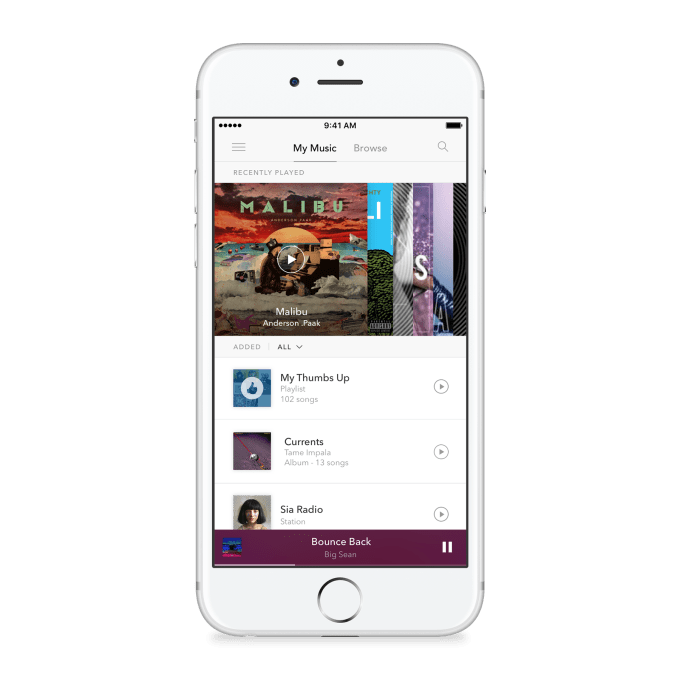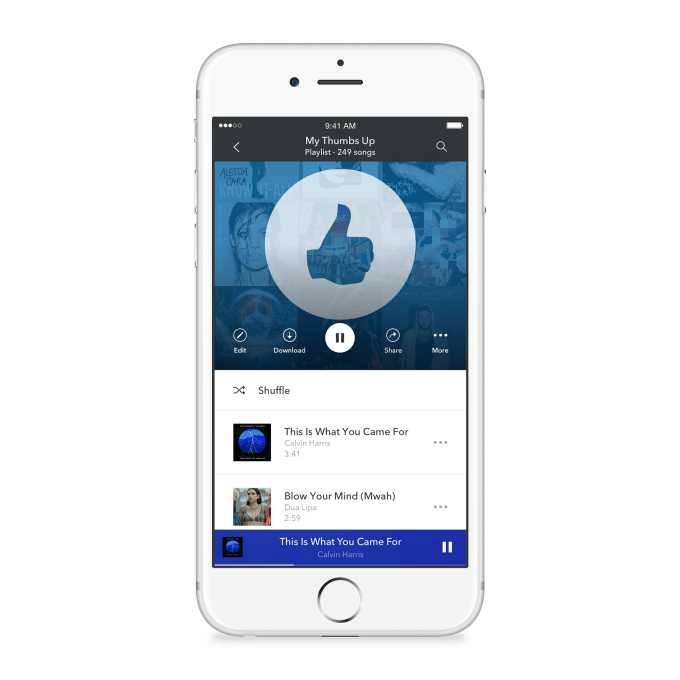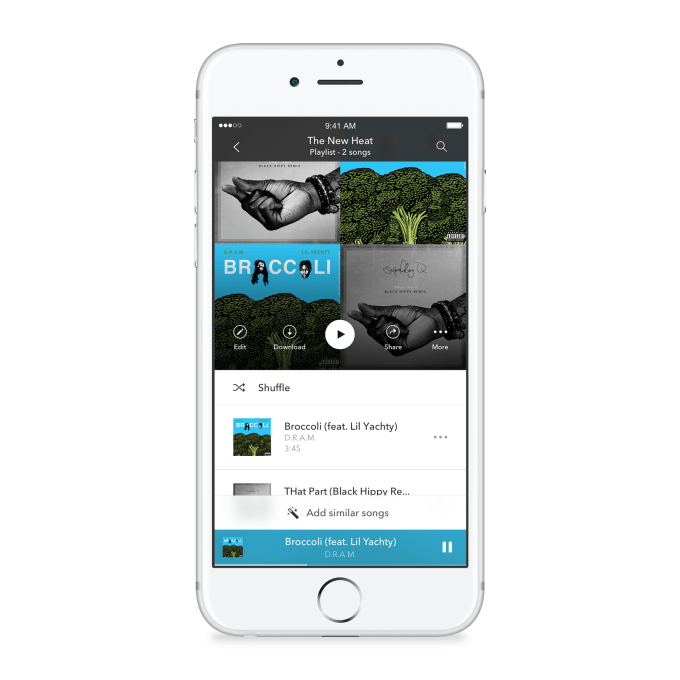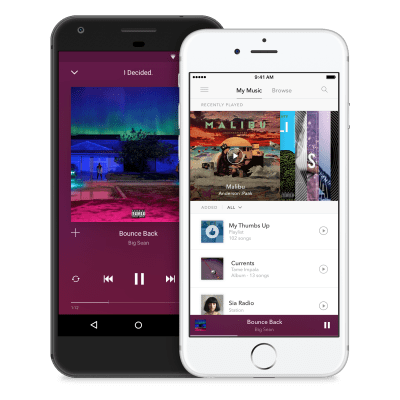Pandora’s long-awaited alternative to Spotify has arrived today. The company this morning announced the debut of a new paid tier to its streaming service called Pandora Premium, which offers a combination of radio-like listening as well as the option to search and play any track and create your own playlists. Priced competitively with the other on-demand music services on the market, the new service is $9.99 per month.
The launch follows the arrival of other expanded offerings from Pandora last year, as the music streaming market shifted to favor on-demand services that expose you to new music through personalized recommendations — like Apple Music and Spotify both do. Music discovery was an area where Pandora had earlier succeeded, as its radio service would play other, similar songs based off the artist or track you initially played.

But given growing user demand for access to on-demand music, Pandora announced it would roll out new tiers to its service last year. Last fall, it launched Pandora Plus, a $5 per month service that offered ad-free music streaming with a wider feature set, including the ability to skip more songs, more replays and offline listening. The service arrived with a smaller catalog around 2 million tracks.
At the time of its launch, Pandora said that Premium would arrive by year-end. It took a little longer, apparently.
Pandora Premium is meant to challenge Spotify and Apple Music head-on, but it also tries to differentiate itself via feature set and user experience.
[gallery ids="1463831,1463827"]
The app’s design is inspired by Rdio, the streaming app it acquired back in 2015, remembered best for its beautiful interface. In Pandora Premium, for example, there’s an all-new “Now Playing” screen where the background dynamically changes color to match the album art of the music you’re playing. There’s also a new menu for collecting, downloading and sharing, and a new layout for playback control, including the replay button introduced in Pandora Plus.
Taking on Spotify by offering a better design is a viable angle, as Spotify can feel more utilitarian at times, rather than pleasurable to use.
In terms of its user experience, Pandora Premium tries to one-up its rivals on recommendations. Instead of focusing on new releases and popular tracks, it offers more personalized album recommendations based on your listening habits. That is, if you tend to favor a certain genre, you’ll be shown new albums from that category instead of just a broad selection of new releases.

The company says it also has filtered its 40 million songs to remove the “karaoke tracks, knock-off covers and pet sounds…that slow down other services.” As a representative explains, Pandora continues to offer access to the same content as its competitors, but is using human curation for quality and machine learning for scale to make it easier to locate the right tracks users want.
The service also takes advantage of the Music Genome Project to make playlist building easier. You can track a new playlist with just a few tracks, then Pandora will offer an “Add Similar Songs” option that will suggest other, related tracks to fill out the rest. (This is a feature Spotify already offers, known as “Suggested Songs.”)
Thumbs up/Thumbs down remains a core feature in Pandora’s premium service, but now you’ll be able to revisit your liked songs via a dedicated playlist of thumbs’d up tracks. This playlist, as well as any other playlist, album or song, also can be saved for offline listening.

More features are coming, including AutoPlay — which will continue playing more music after your playlist, album or song ends. Pandora also will bring Premium to more devices, including the desktop web.
The service may be able to convert some small portion of Pandora’s sizable user base of more than 78 million, but it’s unclear how many Pandora customers looking for an on-demand experience are still around — many of those who wanted more features have since moved onto Spotify, which recently hit 50 million paying customers, or Apple Music, which has grown to 20 million as of December.
Pandora One, its premium service that transitioned into Pandora Plus, had only around 4 million users, for comparison’s sake.
Meanwhile, Pandora’s service hasn’t broken much new ground at launch to encourage happy customers to switch. Things like personalized recommendations, song suggestions and offline play are standard features on its rivals. The best thing it has going for it at launch is its fresh, attractive design. Over time, we’ll be able to better tell how well Pandora Premium’s music discovery features hold up, compared with its rivals. Ultimately, this is the selling point that could win the service more users, if it works well.
Pandora Premium is rolling out starting this week via invitation.
